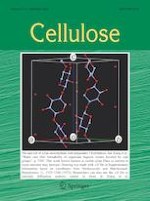11-07-2020 | Original Research
Selective (ligno) cellulose hydrogenolysis to ethylene glycol and propyl monophenolics over Ni–W@C catalysts
Published in: Cellulose | Issue 13/2020
Log inActivate our intelligent search to find suitable subject content or patents.
Select sections of text to find matching patents with Artificial Intelligence. powered by
Select sections of text to find additional relevant content using AI-assisted search. powered by
